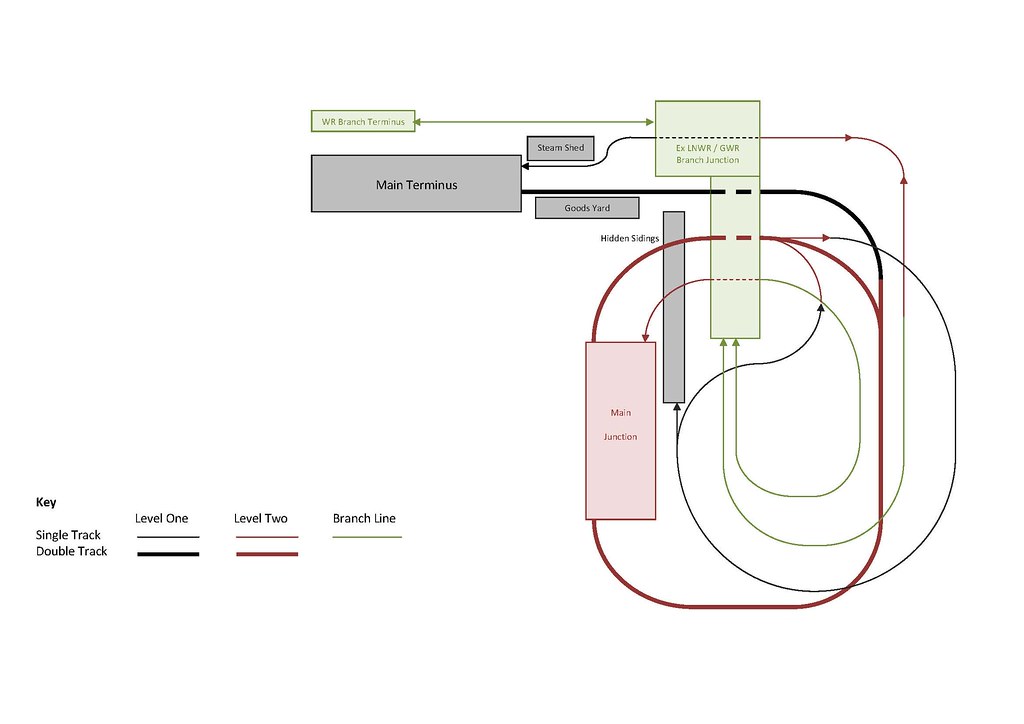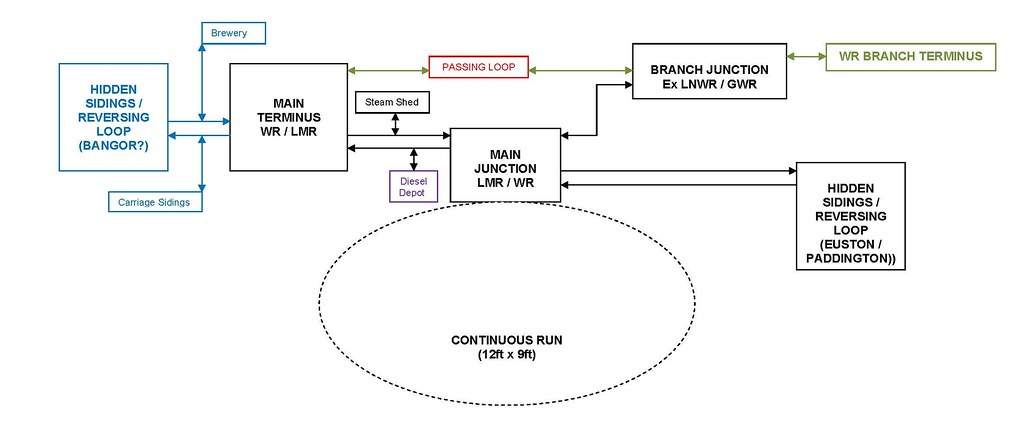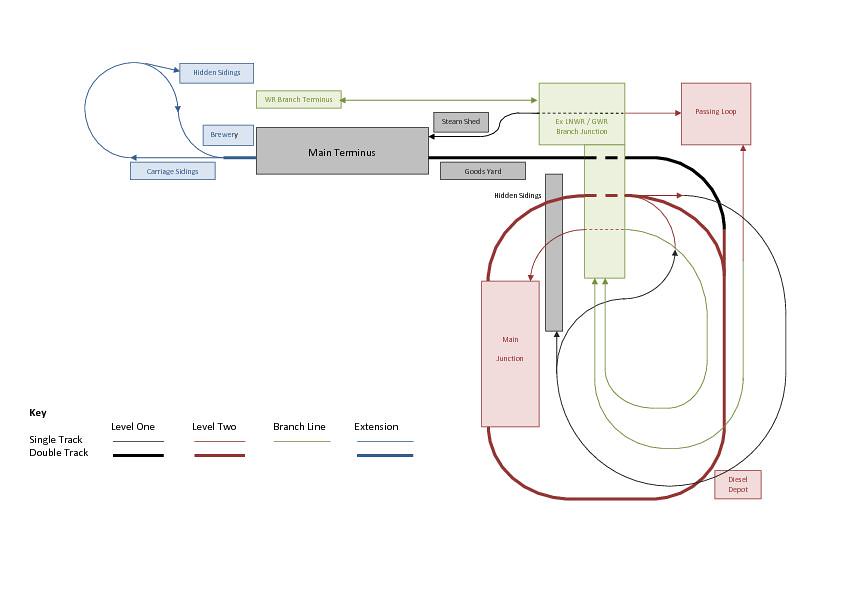In the beginning there was a space – how is it being used?
One or two of you have asked if I can describe the layout itself in more detail.

1999 and the old layout was dismantled and all the rolling stock boxed up ready to move house. After the move there were flower borders to be made, stone walls to be built and ponds to be dug. It took until 2005 before a start could be made constructing the new layout. After much discussion an area was identified which would enable the formation of an oval approximately 12ft by 9ft together with an extension some 20ft long by 3ft wide – being the maximum width thought practical for leaning over / gaining access.
What were the layout constraints? The minimum radius had to be 36inches / PECO Medium Radius. The layout must accommodate seven coach trains – for ‘steam’ hauled trains past experience suggested gradients no steeper than 1 in 60. For operational interest there needed to be a mainline (terminus), an ex GWR branchline (terminus) and hidden sidings / reversing loop representing the rest of British Railways. The layout also had to incorporate a section of ‘continuous run’ for test purposes and somewhere to simply 'watch trains going by’.

The figure above is a schematic of the initial layout and shows the Main Terminus with a double track mainline leading to a Main Junction and on to Hidden Sidings / Reversing Loop. There is also a single track Branchline (ex GWR) with a separate Branch Junction with both ex GWR and ex LNWR running rights and a Branch Terminus.

The track layout adopted is shown above diagrammatically. The Main Terminus is on the low level with a double track mainline up to the intermediate level with its Main Junction. From the Main Junction there is a single track connection up to the high level Branch Junction. There are also connections down to the Reversing Loop containing four Hidden Sidings. Also on the low level there is the single track branch line from the Main Terminus connecting straight up to the high level Branch Junction and on to the Branchline Terminus.

I would say that it is only after ‘playing trains’ that you realise the shortcomings of a particular layout. The schematic above shows the current layout. One of the earliest additions to the initial scheme was a Passing Loop on the single track branch line. Not only did this provide temporary storage for a ‘branch train’ but the incorporation of a station with a bay platform gave a reason for the use of an ‘autotrain’ / ex GWR railcar.

The largest addition was an extension to the Main Terminus to create a ‘through station’ leading to another set of Hidden Sidings / Reversing Loop. In due course the extension will feature a Brewery (Scenecraft variety) and a raised area with housing to hide some of the trackwork.
An unforeseen benefit of the second Reversing Loop is that the double track main line has been converted into a huge ‘dumbbell’ where a train takes at least three minutes to travel the whole of the double track main line before returning to its original starting point. There are some videos on YouTube with trains going
Like all good plans the original paper copy seems to have disappeared. In due course it is my intention to provide here track layout details for all the individual stations.
-
 4
4


.thumb.jpg.60c53fcbcaa34017b05b8919d1a9e6d2.jpg)

5 Comments
Recommended Comments
Create an account or sign in to comment
You need to be a member in order to leave a comment
Create an account
Sign up for a new account in our community. It's easy!
Register a new accountSign in
Already have an account? Sign in here.
Sign In Now